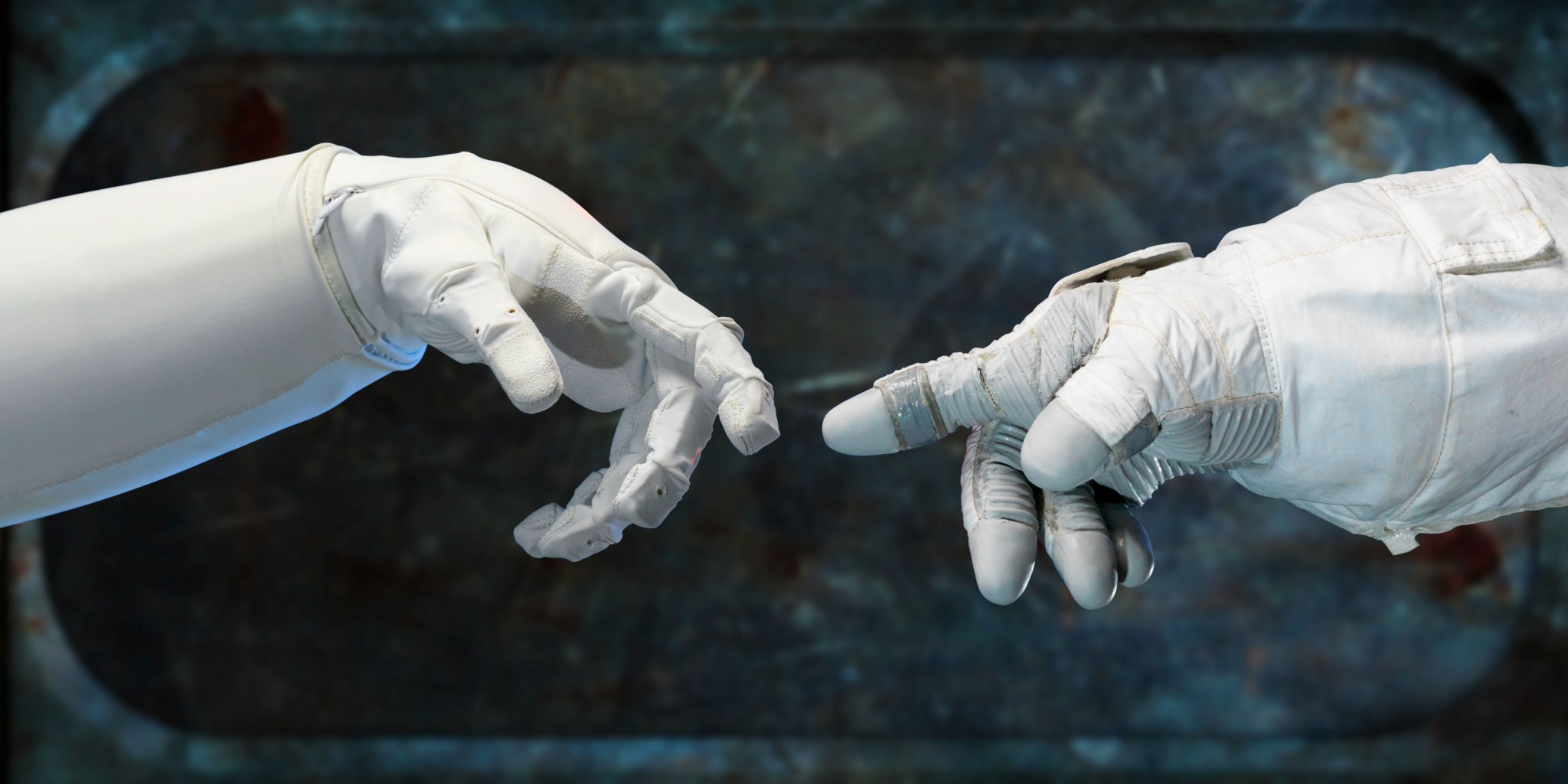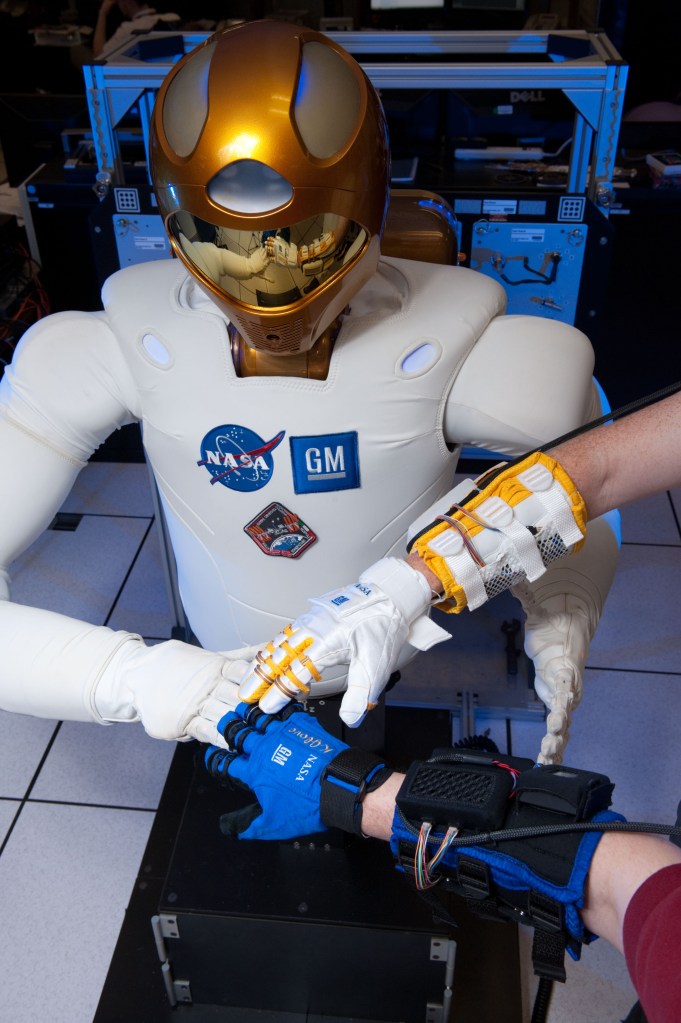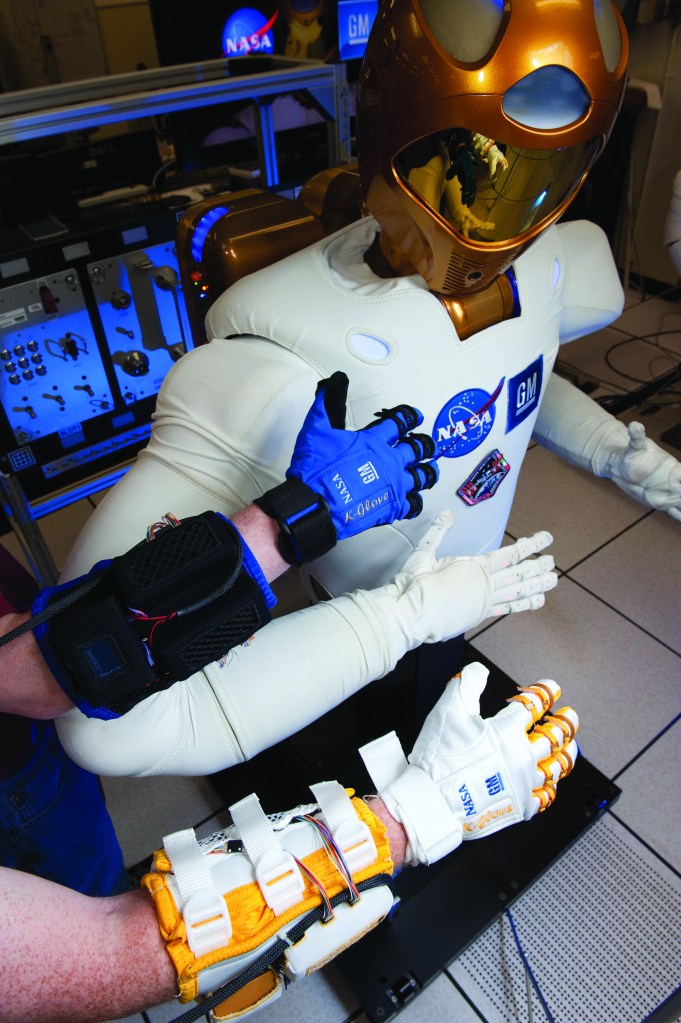While Robonaut 2 has been busy testing its technology in microgravity aboard the International Space Station, NASA and General Motors have been working together on the ground to find new ways those technologies can be used.
The two groups began working together in 2007 on Robonaut 2, or R2, which in 2011 became the first humanoid robot in space. Now they are jointly developing a robotic glove that auto workers and astronauts can wear to help do their respective jobs better while potentially reducing the risk of repetitive stress injuries. Officially, it’s called the Human Grasp Assist device, but it’s generally called the K-Glove or Robo-Glove for short.
When engineers, researchers and scientists from GM and NASA began collaborating on R2, one of the design requirements was for the robot to operate tools designed for humans, alongside astronauts in outer space and factory workers on Earth. The team achieved an unprecedented level of hand dexterity on R2 by using leading-edge sensors, actuators and tendons comparable to the nerves, muscles and tendons in a human hand. In doing so, they realized that there was no reason that a robot should be the only one to benefit from their findings.
Research shows that continuously gripping a tool can cause fatigue in hand muscles within a few minutes, but initial testing of the Robo-Glove indicates the wearer can hold a grip longer and more comfortably.
For example, an astronaut working in a pressurized suit outside the space station or an assembly operator in a factory might need to use 15- to 20 pounds of force to hold a tool during an operation but with the robotic glove they might need to apply only five to 10 pounds of force.
“The prototype glove offers my spacesuit team a promising opportunity to explore new ideas, and challenges our traditional thinking of what extravehicular activity hand dexterity could be,” said Trish Petete, division chief, Crew and Thermal Systems Division, NASA’s Johnson Space Center. And there are promising applications on the ground, as well.
“When fully developed, the Robo-Glove has the potential to reduce the amount of force that an autoworker would need to exert when operating a tool for an extended time or with repetitive motions,” said Dana Komin, GM’s manufacturing engineering director, Global Automation Strategy and Execution. “In so doing, it is expected to reduce the risk of repetitive stress injury.”
Inspired by the finger actuation system of R2, actuators are embedded into the upper portion of the glove to provide grasping support to human fingers. The pressure sensors, similar to the sensors that give R2 its sense of touch, are incorporated into the fingertips of the glove to detect when the user is grasping a tool. When the user grasps the tool, the synthetic tendons automatically retract, pulling the fingers into a gripping position and holding them there until the sensor is released.
NASA and GM have submitted 46 patent applications for R2, including 21 for R2’s hand and four for the Robo-Glove alone.
“The K-Glove is the first of what we expect to be many spinoffs derived from Robonaut 2,” said Ron Diftler, Robonaut 2 project manager. “Another example is we’re developing arms built on Robonaut technology to be used on NASA’s multi-mission Space Exploration Vehicle.” The first prototype of the glove was completed in March 2011 with a second generation arriving three months later. The fabric for the glove was produced by Oceaneering Space Systems, the same company that provided R2’s “skin.”
The current prototypes weigh about 2 pounds and include the control electronics, actuators and a small display for programming and diagnostics. An off-the-shelf lithium-ion power-tool battery with a belt-clip is used to power the system. A third-generation prototype that will use repackaged components to reduce the size and weight of the system is nearing completion.





























